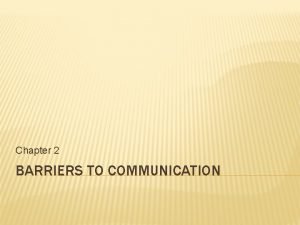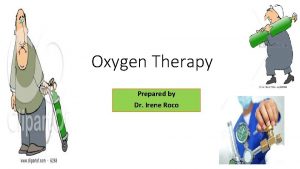Effects of Differing Types of Protective Face Masks

- Slides: 1

Effects of Differing Types of Protective Face Masks on VO 2 max in Trained Athletes: A Pilot Study Segimoto E, Mahmood A, Valdez A, Lockard M Department of Exercise and Health Science, Willamette University, Salem, OR 97301 Abstract This study aimed to look at the physiological effects of wearing masks during high intensity exercise by measuring VO 2 max. METHODS. By using a repeated measures single factor design, seven collegiate athletes (mean age = 20. 7) recruited for this study had their VO 2 max measured via the Parvo Medic True. One 2400. Each participant performed the graded exercise protocol under three separate conditions: surgical mask, Under Armour mask, and no mask. A repeated measure ANOVA was used to determine any significant differences between VO 2 max values of the three tested conditions. RESULTS. No statistical difference was found between any of the conditions when measuring VO 2 max (p = 0. 27) (Table 1). A Post-Hoc comparison showed no statistical difference between the control and surgical mask condition (p = 0. 143), control and Under Armour condition (p = 0. 848), and surgical mask and Under Armour condition (p = 0. 195) (Table 2). DISCUSSION. Healthy individuals do not have an altered VO 2 max, nor ventilatory depth when wearing a face mask. However, subjects reported difficulty in breathing during intense exercise, predominantly in the surgical mask condition. Multiple trials of the same conditions with a wider variety of participants is necessary for replicating and confirming the results presented in the current study. Introduction During the COVID-19 pandemic, it has become apparent that people feel as though masks negatively affect their athletic performance, especially during intense exercise (Fikenzer et al. , 2020). As the virus is primarily spread through respiratory droplets, masks are extremely important for reducing the spread of COVID-19 (Rawal, 2020). When a person is exercising intensely, they are forcefully respirating, which can increase the amount of respiratory droplets in the air (Blocken et al. , 2020). VO 2 max can be defined as the maximum amount of oxygen an individual can utilize during a maximal intensity exercise. In general, VO 2 max is a good indicator of cardiovascular endurance and aerobic fitness (Mc. Ardle, W. D. , Katch, F. I. and Katch, V. I. , 2010). People have generally self-reported that masks affect their athletic performance, only a limited amount of research has been done on the effects of different masks on VO 2 max. Companies, such as Under Armor, are currently making claims that their athletic masks allow for regular athletic performance while wearing a mask, especially when compared to wearing a surgical mask (Under Armour, 2020). The goal of this study is to determine if wearing protective face masks during athletic performance will alter VO 2 max. It is hypothesized that there will be no significant change in VO 2 max values across all three conditions: no mask, Under Armour mask, and surgical mask. It is important to note that this study is not testing how effective different types of masks are for preventing the spread of COVID-19. Method Overview • Student-Athletes were recruited from Willamette University to participate in three graded exercise tests to measure VO 2 max. • VO 2 max was measured with the presence of 1) no mask, 2) Under Armour mask, and 3) surgical mask. Under Armour Mask Subjects • 7 volunteer NCAA Division III athletes • Age Range: 20 -22 yo • Location: Willamette University’s Gatke Lab Set-up Surgical Mask moving. thinking. being. Table 3. Within Subjects Comparison of Vt for All Three Conditions. Sum of Mean df F p Squares Mask Type 0. 152 2 0. 076 3. 092 0. 083 Residual 0. 295 12 G-G 0. 083 0. 025 Note. No significant difference in Vt between all three conditions. Table 4. Post-Hoc Comparison of Vt Between Conditions. Comparison Mask Type Mean Difference SE p No Mask Surgical 0. 203 0. 084 0. 155 Under Armour 0. 060 0. 082 1. 000 Under Armour -0. 143 0. 086 0. 443 Surgical Figure 1. Example of testing trial. Figure 2. Surgical masks attached to intake tube. Note. No significant difference in Vt between any of the conditions. Graded Exercise Protocol • Warm-up consisted of five to ten minutes of light to moderate intensity running at a 0% incline to elevate the heart rate to the desired 70% of maximum heart rate. • Subject maintained a manageable speed while increasing the incline one to three percent every two minutes till failure (Beam & Adams, 2014). • Participant’s heart rate, percent incline, rate of perceived exertion (RPE), and difficulty breathing (measured with Borg CR 10 scale) were recorded at the beginning of each stage. Data Analysis • Differing VO 2 max scores across conditions were assessed using repeated measures ANOVAs. • Post-Hoc comparison test was used to find significance between each condition. Results Table 1. Within Subjects Comparison of VO 2 max for All Three Conditions. Sum of Mean df F p Squares Mask Type 53. 0 2 26. 5 1. 46 0. 270 Residual 217. 5 12 Figure 3. Distribution of VO 2 max for All Participants per Condition. Discussion n 2 p • 0. 196 18. 1 Note. No significant difference in VO 2 max between all three mask conditions. • Table 2. Post-Hoc Comparison of VO 2 max Between Conditions. • Comparison Mask Type Mean Difference SE p No Mask Surgical 3. 570 2. 28 0. 143 Under Armour 0. 444 2. 28 0. 848 Under Armour -3. 126 2. 28 0. 195 Surgical Note. No significant difference in VO 2 max between any of the conditions. • Summary 7 NCAA DIII athletes participated in three graded exercise tests with differing masks present. VO 2 was measured along with ventilatory depth (Vt), respiratory exchange ratio, minute ventilation, and VCO 2. VO 2 max and Vt were compared within subjects. Future Research Examine if different mask materials have an effect on aerobic performance during intense exercise. Increase number of trials per condition and increase the sample size to include a wider variety of participants in age and activity level. Conclusion Surgical and cloth face masks have no adverse effects on aerobic performance. Athletic performance was maintained across all three conditions. Acknowledgements • Participating Willamette University DIII Athletes and members of the Exercise Physiology course contributed significantly to this study.

